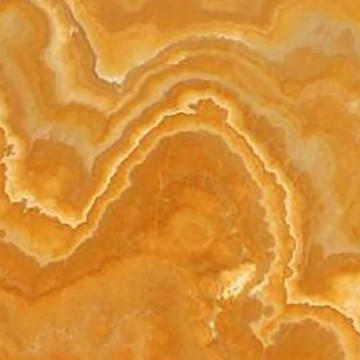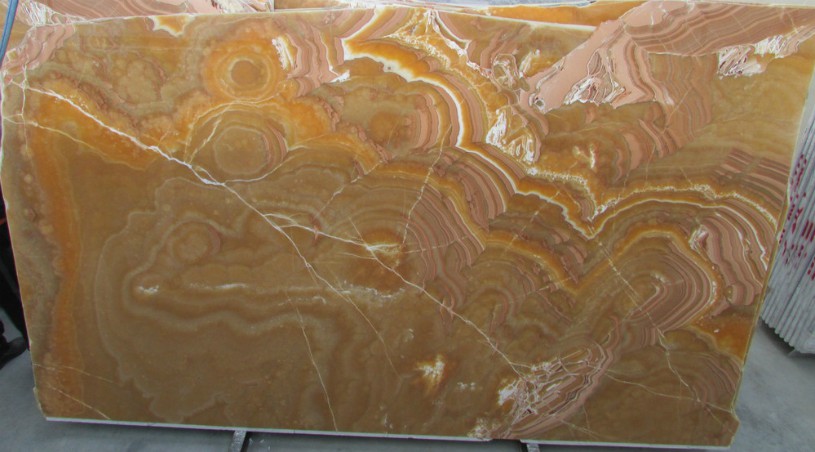Orange Onyx

Orange Onyx is a striking natural stone which is quarried in North Khorasan1, in North Eastern Iran. This onyx as the name suggests is orange in colour. The orange is caused by oxidation staining. This is caused by exposure to groundwater. The parts of the onyx which have not been subject to oxidation remain white.
Geologically honey onyx is compact banded travertine composed of very fine-grained calcite. Like all onyx's Orange onyx is translucent and can be used to from stunning feature walls by placing lighting behind the onyx.
A common decorative technique used with onyx is the use of book-matching. This is where one slab is cut from the block and polished. Then another slab is cut from the block and polished on the reverse side of the slab. The result is two polished faces of onyx with the reverse image of each other. It looks much like an open book hence the term book-matching. Book-matching and the use of back-lighting2 can be used on any type of onyx including honey onyx, white onyx and green onyx.
When the onyx is cut into slabs using the cross-cut technique the white parts of the orange block form circular type patterns across the surface. And when the vein-cut technique is used the white is in a more linear pattering flowing across the surface.
The image below shows onyx which has been cut using the cross-cut technique. This onyx is also back-lit and book matched. The use of these techniques combined with orange onyx's inherent beauty make it one of the most effective materials in the world at making a stunning impression wherever it is deployed.

Each orange onyx slab is truly unique with an enchanting array of yellow, white and sometimes even green or pink gliding across an orange background. For this reason before purchasing any orange onyx it is a good idea to check what your slabs look like before purchase (below you can see an orange onyx slab and the typical patterning which flows through it).
Orange onyx can be seen used in feature walls, cladding, worktops, luxury furniture and architectural features3. It is a beautiful material to use in areas which will be used at night. This allow the use of light to really magnify the beauty of this material. The lighting can be placed above the onyx or below it.
Ways in which this can be achieved are with chandelier lighting above an onyx dining table ,placing lighting behind an onyx feature wall at a hotel lobby or bar, or using lighting underneath onyx tiles.
However, you decide to use orange onyx this unique natural stone will guarantee both luxury and an entrancing aura.

Products in this Material